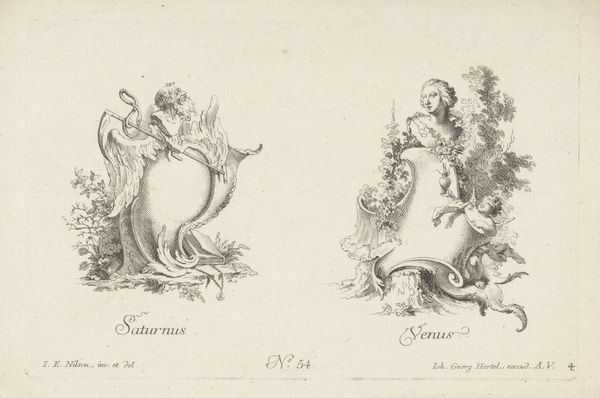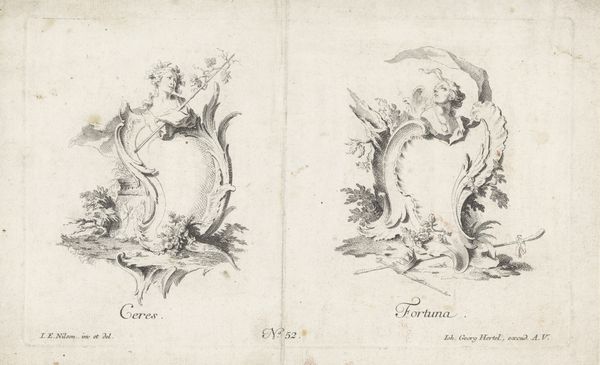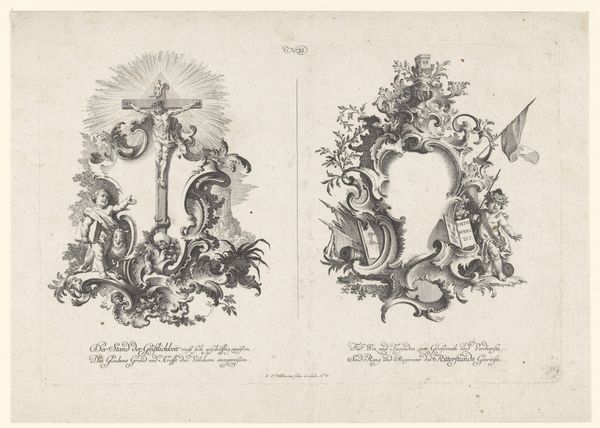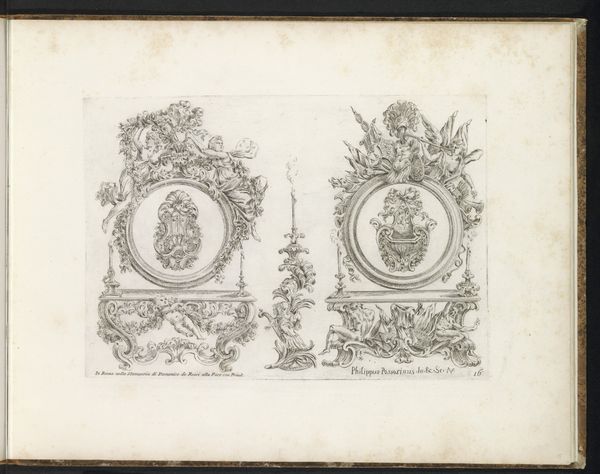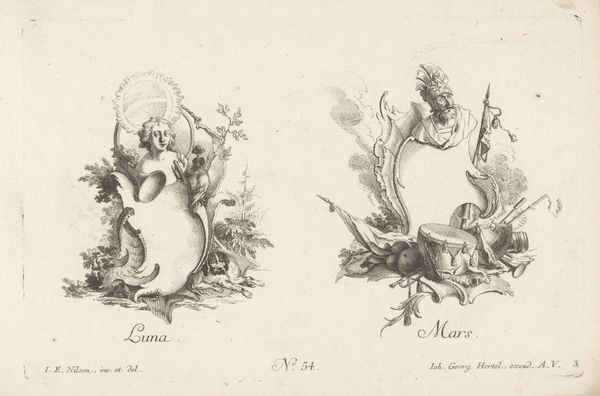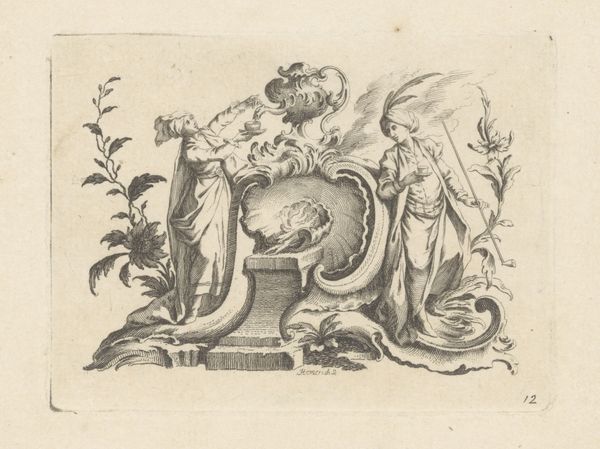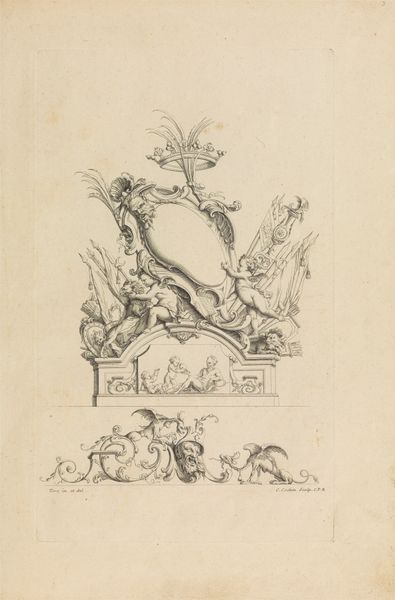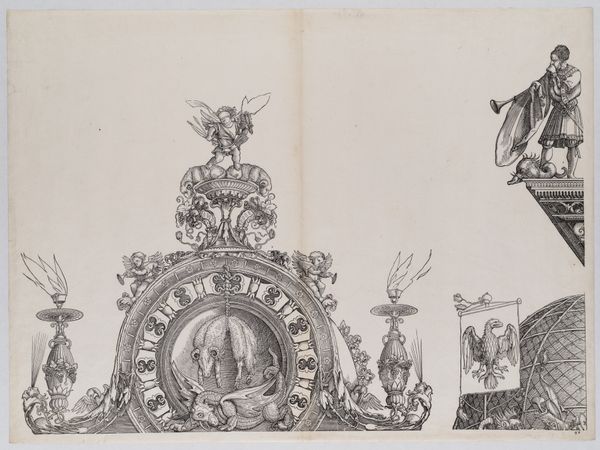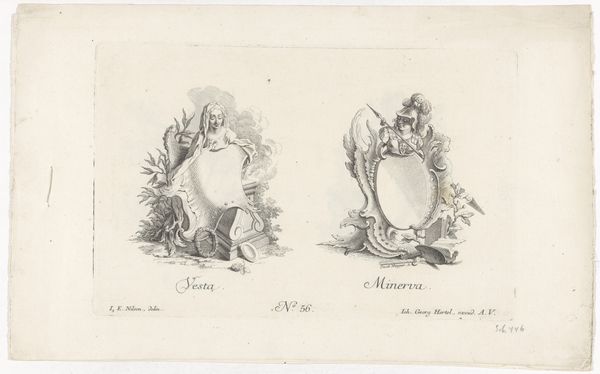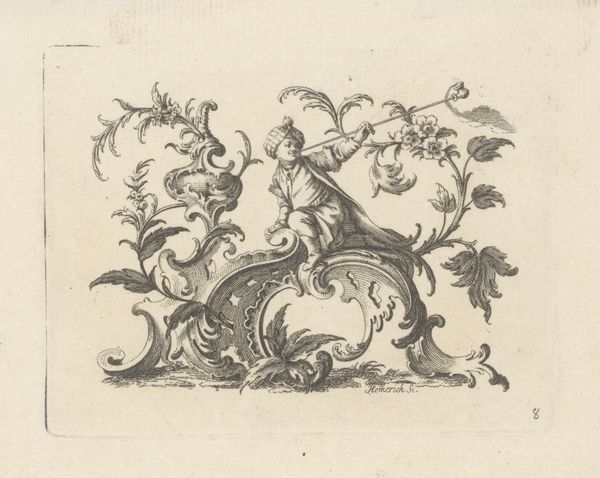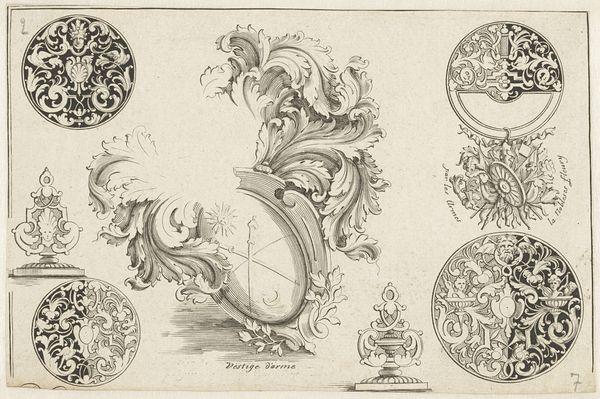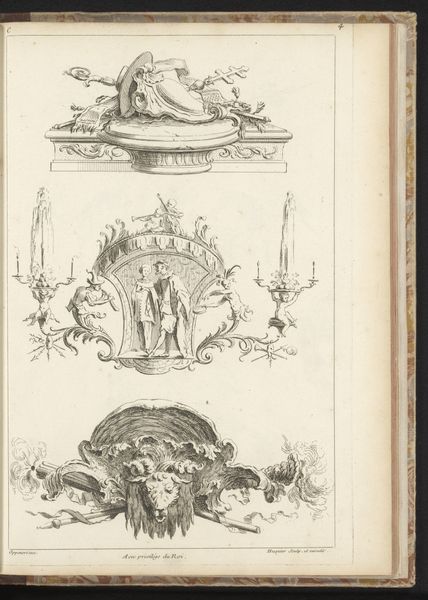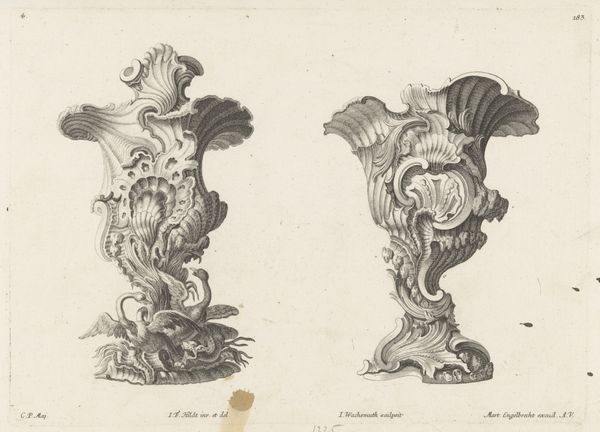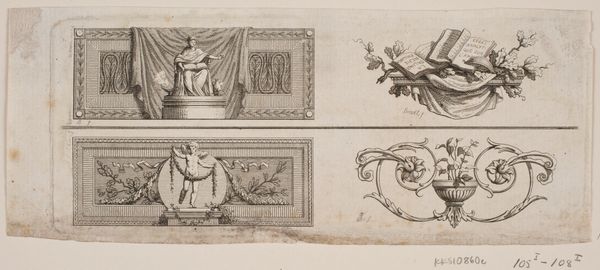
print, engraving
#
allegory
#
baroque
# print
#
figuration
#
line
#
engraving
Dimensions: height 192 mm, width 297 mm
Copyright: Rijks Museum: Open Domain
Curator: This delicate engraving, titled "Sol," created between 1731 and 1775 by Jakob Wangner, presents a fascinating example of Baroque printmaking, currently held in the Rijksmuseum collection. Editor: It evokes a sense of restrained elegance. The symmetrical compositions, floral motifs, and overall subdued palette convey a mood of neoclassical poise, like an untouched memory. Curator: Exactly. The image employs line work masterfully to delineate forms and textures. Look at how Wangner uses hatching and cross-hatching to suggest depth, especially in the drapery and the floral ornamentation around the central figures. He manipulates light within a grayscale field, carefully rendering surface with very economic line work. Editor: It’s hard not to consider the use of allegory here. Given the historical context and the allegorical title of the print, "Sol"—Latin for sun—along with the angelic figure at the center, I wonder about the association to the "Sun King", Louis XIV, or even to an idea of idealized divinity. What role do visual metaphors play here, not only in conveying status, but reinforcing patriarchal systems through imagery of celestial power? Curator: An intriguing question. Yet, looking closer, one must appreciate the precision and control Wangner exercises over his medium. Notice the clarity with which the architectural elements and flowing robes are rendered. Consider the overall balance of the composition: the rhythmic interplay of light and shadow which serves the idealized figuration centrally and at the apex of each vignette. Editor: True, it reflects a technical virtuosity emblematic of the period. Still, for whom were these prints produced and how were they circulated? They operate on both an aesthetic and cultural level. Recognizing the class position and power dynamics helps clarify their meaning in relationship to an elite circle, or, an aristocratic ideal that certainly had cultural ramifications. Curator: I concur to a point, but one can step away from direct societal impact. It also functions independently. The manipulation of formal elements, considered intrinsically, provides a rich viewing experience beyond its original social functions. The work achieves art through line and form! Editor: A compelling reading indeed. By viewing them in relationship to their sociopolitical contexts, and understanding art's critical relationship to culture, one may better appreciate them for all their complexities. Curator: Perhaps... or, as elements to study independently for what they achieve visually. Editor: It seems we agree to disagree on the most vital approach, and from what lenses this “Sol” is best admired.
Comments
No comments
Be the first to comment and join the conversation on the ultimate creative platform.
